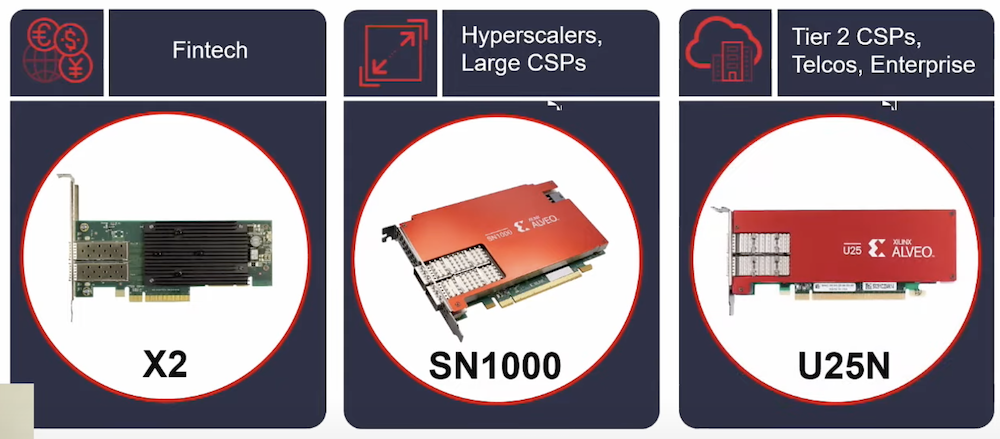Data centers in the enterprise need to be adaptable to handle the variety of workloads that may be in process at any point in time. Xilinx and their SmartNIC line of products offload overburdened CPUs to speed up the data center, which they displayed at their recent Tech Field Day appearance.
Why the Data Center Needs SmartNIC
Moore’s Law has slowed to the point that most single-purpose processors prove to be less effective than ones that can be configured in a more adaptable fashion. After all, many enterprise data centers are responsible for massive-scale workloads that can often change day to day based on the operational tasks at hand.
In order to leverage processors more efficiently, many are considering SmartNIC architectures for controlling network interfaces, intelligently recomposing their setup to meet the needs of the specific workloads being handled in the moment. That way, instead of building massive server stacks to handle individualized processes, IT staff can instead build smaller, more efficient data centers that adapt and scale as their workloads do.
Enter, Xilinx SmartNIC
Xilinx, the renowned chip manufacturer, is leading the charge of this SmartNIC approach to the data center with some of the most recent entries to their product line (shown below). Xilinx SmartNICs can be programmed with either ASIC, ARM, or FPGA formats, allowing IT admins to choose which function(s) their SmartNIC will be responsible for.

In this way, Xilinx is active targeting the FinTech, Hyperscale, and Tier 2 enterprise market spaces, as these verticals often demand high performance while also remaining cost and resource conscious.
4 Key SmartNIC Trends
At their Tech Field Day appearance in September, Xilinx’s Pradeep Nallimelli, Datacenter Network & Security Architect, and Sanjay Manney, Director of Product Planning & Product Management, presented their approach to the SmartNIC market. Amidst the presentation, they identified four key trends that have led to the successes of Xilinx SmartNIC architecture.
Offloading Overburdened CPUs
With Moore’s Law slowing down, many CPUs are becoming laden with workloads that reduce their performance. SmartNIC architecture offloads the workloads from these CPUs, dynamically taking on processes as need demands.
Hardware Acceleration
Since SmartNICs reduce overall workload tolls on CPUs, less resources, including power, are used. This leads to an increase in efficiency with an overall reduction in cost.
Need for Solutions
Simply put, today’s enterprises are constantly seeking to solve the problems that hinder their operations. SmartNIC architectures help to free up the time of engineers that would usually be addressing workloads that the SmartNIC tackles.
Ethernet Speeds
Network transfer speeds will not be exceeding 25 Gbps for years, and as such, network engineers need to find other ways to speed up processes. SmartNICs offload processing requirements, allowing for efficiency at scale.
Zach’s Reaction
Xilinx SmartNICs tackle the problems of data center engineers head on, reducing resources necessary for processes while also making them more efficient at scale. Learn more about the capabilities of Xilinx’s product portfolio by watching the rest of their Tech Field Day appearance.




